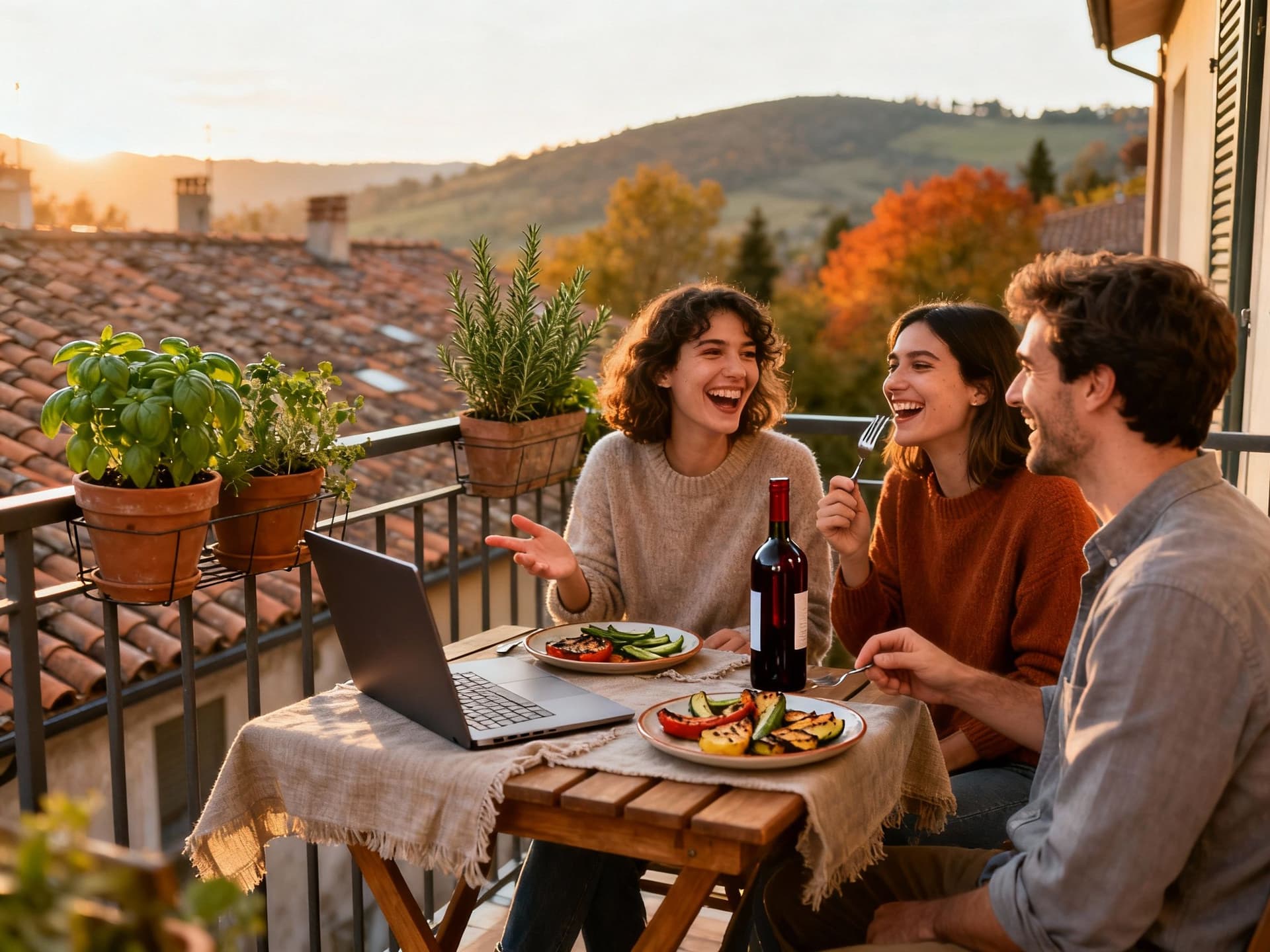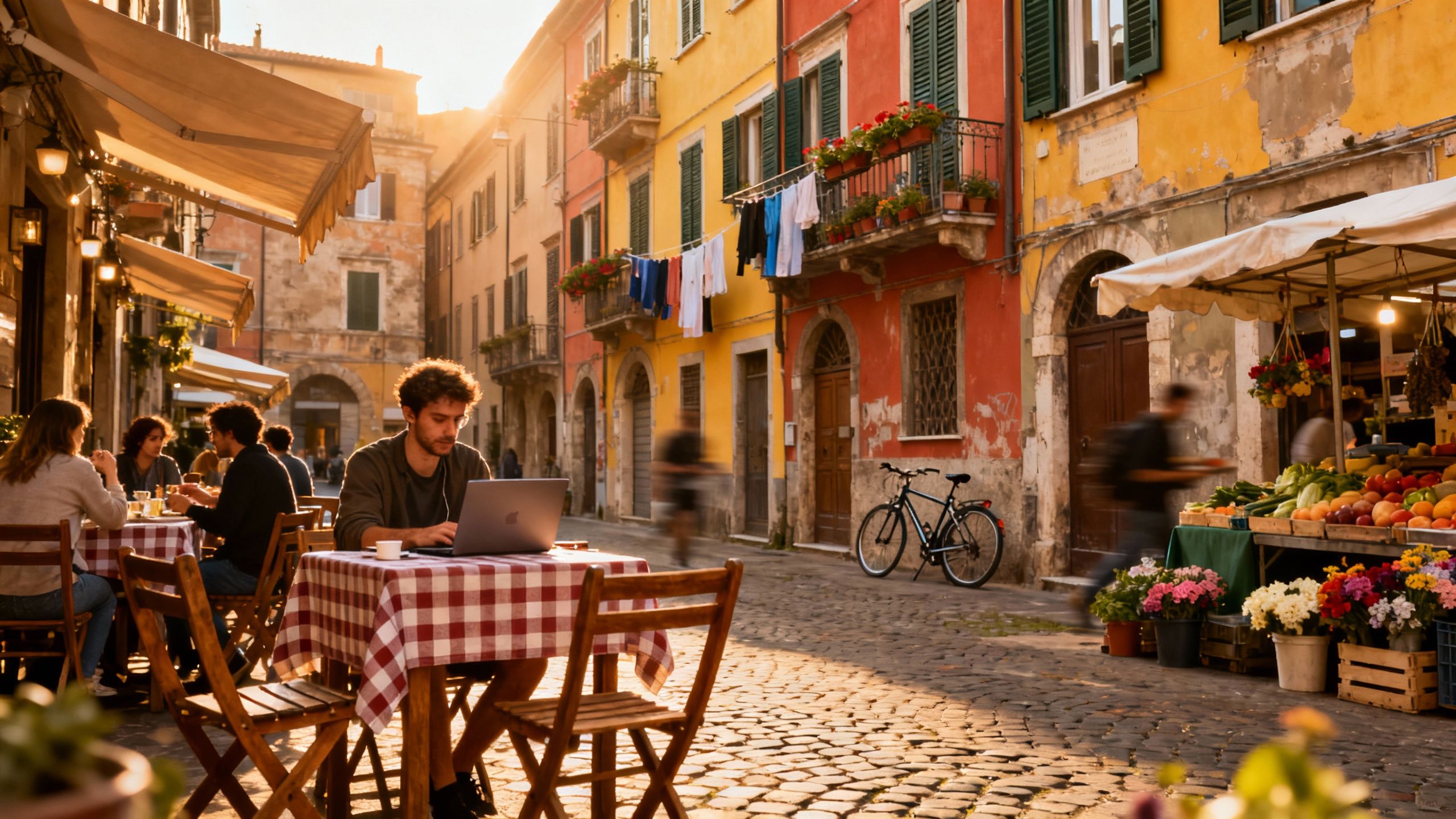Harvest Season House‑Hunt: Italy's Quiet Market Edge
Use Italy’s harvest months to see real neighbourhood life, spot motivated sellers, and make better offers — backed by ISTAT and market reports.
Imagine sipping an espresso on a crisp October morning in a leafy piazza while a nearby olive press hums and the market fills with late‑season figs. In Italy, harvest season is when towns breathe easier, neighbours return to routines, and — surprisingly — the property market softens in ways remote workers can use.
Living the Italy lifestyle — Harvest edition

Italy is not one thing: it's centuries of lanes, seaside piazzas, alpine mornings and vineyard afternoons. Harvest months (late September through November) show that variety at its best — seasonal food stalls, slower tourism, and locals back in town. Nomisma and luxury market trackers say demand remains strong overall, but micro‑windows open by season and region for savvy buyers.
Why autumn feels like ‘homecoming’
Walk through Siena or Faenza in October and you’ll smell wood ovens, hear market vendors restocking, and see families gathering. This rhythm matters: neighbourhoods reveal their year‑round character — not the inflated summer snapshot. For nomads who want a community feel (not a holiday façade), autumn shows how places actually live.
Neighborhood spotlight: Le Marais? Try Oltrarno, Florence
Take Florence’s Oltrarno: artisan workshops, tiny trattorie and a riverbank morning routine. In autumn, studio owners reopen after summer holiday and produce returns to daily life — a signal that long‑term rental demand and community cohesion stay strong. National data from ISTAT shows house prices rose year‑on‑year recently, but neighborhood seasonality still creates tactical buying windows.
- Lifestyle highlights in harvest months:
- Late markets (mercati) brimming with chestnuts, porcini and local wine tastings — perfect for testing a neighbourhood’s food culture.
- Lower tourist footfall means you can walk streets, judge daytime noise levels and meet real neighbours instead of holiday renters.
- Coworking spaces refill with locals — a great time to assess internet reliability, community events and evening meetups.
Making the move: the autumn advantage

Dreams set the scene, but offers close the deal. Autumn matters because supply and seller motivation often shift after high‑season demand cools. Investors rotate from hot summer markets to cities where planning and public projects accelerate — a trend journalists noted in recent market coverage — which can tilt negotiation power for well‑timed buyers.
Property styles that suit nomad life
Look for apartments with dedicated workspace niches, good natural light and reliable heating. In hill towns, choose a compact flat near the piazza; on the coast, prioritise insulation and shutters for milder winters. New builds offer modern infrastructure, while historic flats bring character — both can work if you confirm wiring, insulation and internet.
Work with local experts who read seasons
A good agent knows when a seller is flexible — often in autumn when owners rethink taxes, rentals or move timing. Tell your agent you want to see how a street behaves off‑season: request daytime and evening visits, check the building’s communal areas, and ask to sit in a nearby café for an hour. These small steps reveal lifestyle fit better than glossy photos.
- Autumn house‑hunt checklist (practical + lifestyle): 1. Test the internet and mobile signal at different times of day. 2. Visit a local coworking space and ask about membership costs. 3. Observe foot traffic and noise after 6pm on a weekday. 4. Ask neighbours about heating costs and building maintenance. 5. Check public transport timetables outside tourist season. 6. Request utility bills for previous winter months.
Insider knowledge — what expats wish they’d known
Expats often arrive dazzled by summer terraces and think that’s everyday life. The reality: communities shift with season, and living costs (heating, building fees, winter maintenance) matter. ISTAT data shows national price growth recently, but that masks local seasonality: what feels expensive in July may be negotiable in October.
Language, culture and local rhythm
Learning even basic Italian changes everything. Say ‘buongiorno’ in the bakery, ask about the harvest, and you’ll get honest answers about noise, neighbours and building quirks. Small cultural gestures fast‑track trust — and agents will share more tips when they see you engaging with the place, not just its price tag.
Long‑term life vs short‑term rental illusions
Investors will show you tourist returns; neighbours will tell you about daytime rhythms. Decide if you want a place that earns in summer or one that’s pleasant year‑round. Luxury and tourist hotspots stayed resilient last year, but Nomisma’s analysis shows demand diversifies — coastal and secondary city options are rising for life‑first buyers.
- Red flags to spot during harvest visits:
- Empty storefronts after summer — could be structural decline or simple seasonality; ask long‑term residents.
- Inconsistent heating systems — test for cold nights and request past winter bills.
- Noise from seasonal industry (harvest machinery, winemaking) — decide if that’s charming or disruptive.
- When to act — a simple timing plan: 1. Scout in autumn to observe real life. 2. Make offers late autumn when sellers reassess summer pricing. 3. Close in winter or spring to avoid summer rush and set up utilities before high season.
Conclusion: think like a local. Harvest season is your cheat code to see everyday Italy, meet neighbours, test infrastructure and find motivated sellers. Back your feelings with data — ISTAT shows steady national activity — then use autumn’s quieter streets to fall in love with the right place, not the summer image of it. When you’re ready, a local agent who understands seasonality will turn that love into an offer that fits both lifestyle and market realities.
British expat who moved from Manchester to Mallorca in 2017. Specializes in market analysis and helping fellow Brit navigate local regulations.


